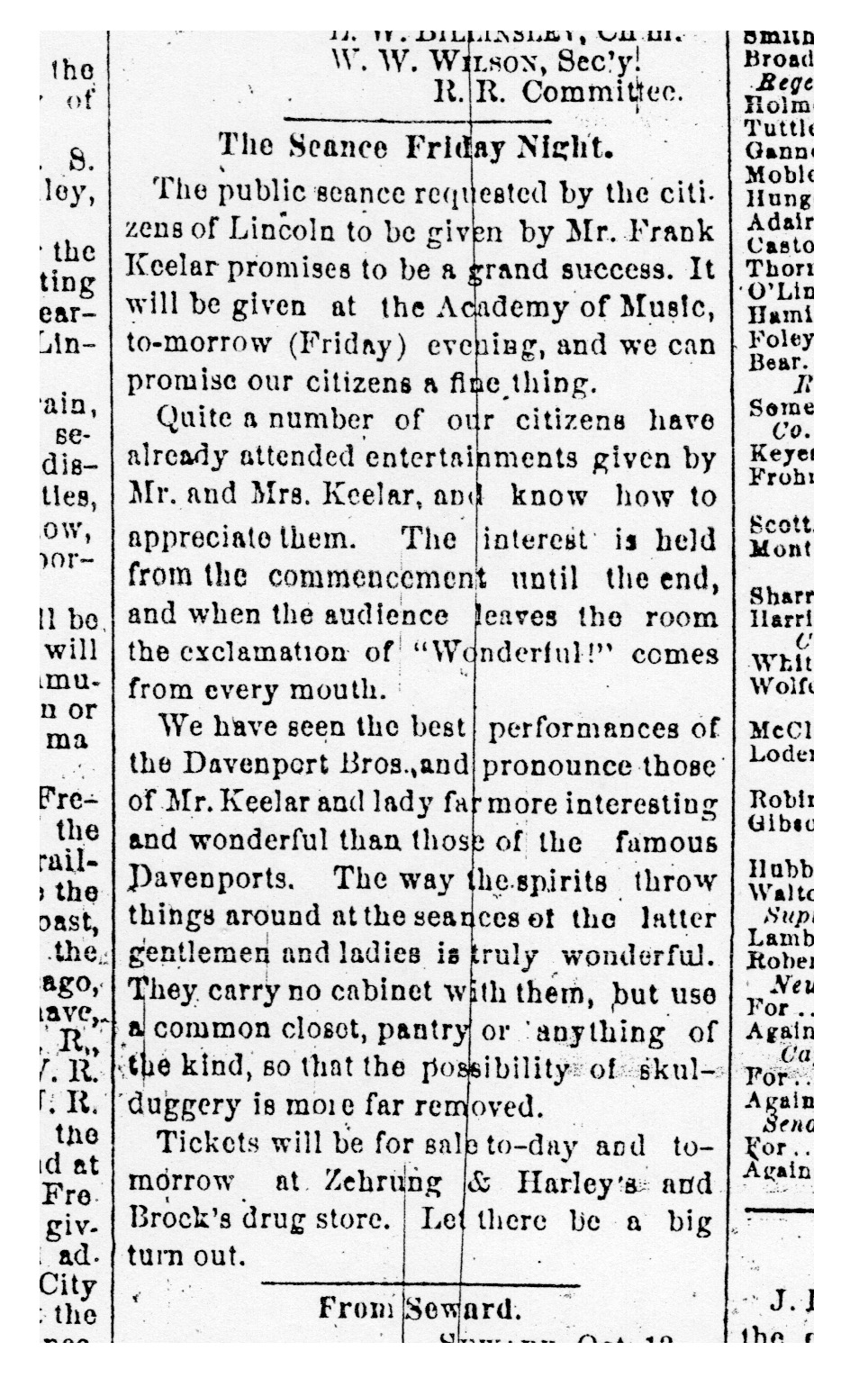The practice of Spiritualism primarily involved the communication with spirits or ghostly associations who have “gone over,” or died in the flesh. Claiming to be in contact with the beyond, the Fox sisters from New York are credited with starting the movement as early as 1848. Both Lincoln and Omaha City Directories indicated spiritualist churches were in operation at the turn of the twentieth century.
The methods of those practitioners in this belief ranged from trance-channeling and clairvoyance to consulting the mysterious Ouija board. One popular parlor game of the late 19th century was gathering together with friends and conducting a seance. This activity was intended to cause communication to occur with the dead. A large industry grew from these beliefs, and professional mediums (human receivers of messages from beyond) operated across America and Europe. The money a professional seance could receive was very attractive to many people, whether reputable or not. In this image Mrs. Annis Cobb was photographed during a public seance. She sits in a spirit box, and the headless dummy to the right is a prop in her performance.

Spiritualist Mrs. Annie Cobb with her dummy (RG3507.PH000011-000010) (above).
Lincoln had a handful of practicing clairvoyants (remote-viewing) operating in the city from 1891 to 1904. Clara Delmont gave readings in her spiritualist shop at 1542 “O” street, now the site of the Federal Building.
Carrie Bean and Edit Edwards practiced their clairvoyant arts at 127 So. 12th street. A competing psychic by the name of Mrs. Daniel Moran had set up shop at 237 So. 20th street. I have a copy of a report indicating that a Mr. Max Hoffman would be holding séances at 1318 “O” street in October of 1904. Public seances were held for many occasions, including fund-raisers. This newspaper article is from the Lincoln Daily State Journal dated October 14, 1875 (Below).

The séance of the late 19th century would have been a show not to miss. A number of people would sit around a table, hold hands, concentrate on a particular individual suggested by a participant, and then go about asking questions of the spirits. If successful, participants could expect a response in the form of rapping sounds on the table set to a simple code of one rap for yes, two for no. In addition to raps, often there would be reports of horns, drums, and other unseen noisemakers coming to life. Although rare, the creation of a physical mass called ectoplasm would produce unusual moments for the participants.
Spiritualism dropped out of favor after World War I, but there are still pockets of practitioners in the art of mediumship. It has evolved, as most movements do, with new understanding and equipment. However, the basics of spirit communication really haven’t changed all that much in the last 150 years.
-Dale Bacon, Assistant Curator



